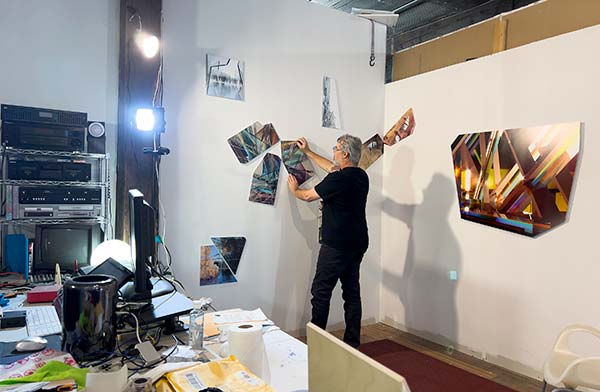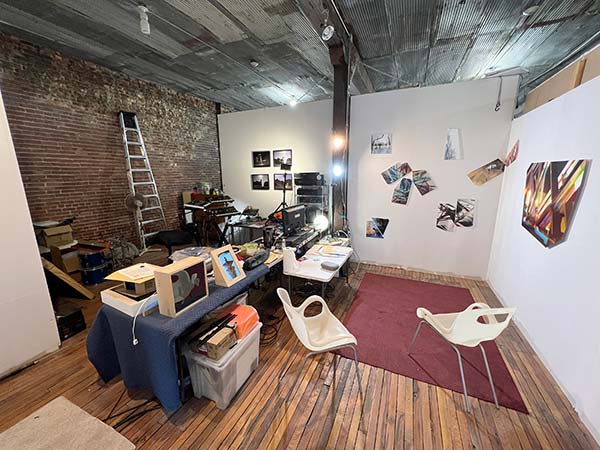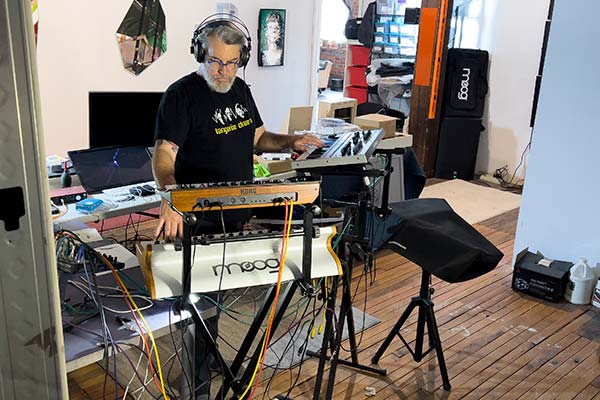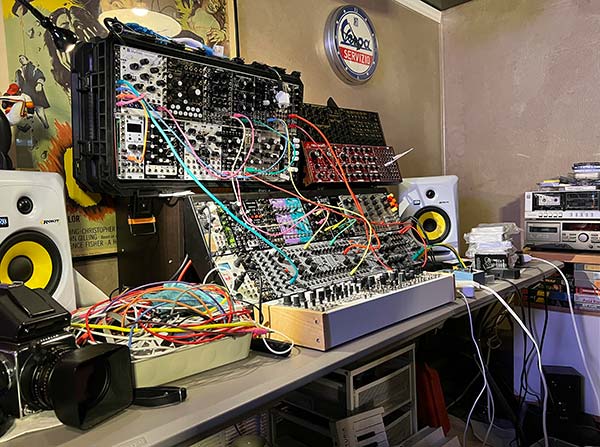Inside the Studio with Barry Anderson
Inside the Studio offers a behind-the-scenes peek into the work environments of WTP artists, as well as insight into their creative process within these resonate spaces. See Barry Anderson’s work in WTP Vol. X #1.
By Jennifer Nelson, WTP Feature Writer
Barry Anderson maintains two studios in two different states. At his home-based studio in Westwood, Kansas, Anderson does the bulk of his multi-media artwork on his computer. In West Bottoms, Missouri, he keeps a second studio in a building filled with artists and craftspeople from Kansas City’s artists district. The studios are separated by a fifteen-minute drive.
In the basement of his home, Anderson has ample space to work on two computers, as well as access music recording equipment. For the past thirteen years, he’s used this space to create his artwork and store his digital archives. The 600-square-foot room also accommodates work tables.

He dedicates his West Bottoms studio to studio visits and prepping wall and projection work. When he’s getting ready for an exhibition, he could go in there every day, working around his teaching schedule at the University of Missouri, Kansas City. The four-story building also houses a letterpress company, a silk-screening firm, and a photography studio. He and his artist friends rented this space when their tenures were up at The Studios, Inc., a residency program offering free studios to artists. Anderson’s floor accommodates five artists working in painting, printmaking, fibers, and film. “I wouldn’t mind a bit more wall space, but it works fine for me now,” said Anderson.

Originally, Anderson had intended for this space, where he keeps his synthesizer, to be a continuation of the performance space he had shared with Ricky Allman, his colleague and occasional collaborator. But the pandemic hit two months after they arrived, so they never got a chance to perform there. Nevertheless, they ended up recording their second extended play album before Allman moved into a studio in his new home last fall.


Anderson works on multiple projects simultaneously. Fragments in Space, his current project in print and animation, is all done in Cinema 4-D, which is a 3-D modeling and animation application. He begins his workday by working on a new patch on his modular synthesizer. Then after an hour, he switches to working on models for new images and animations. He constructs virtual sets of 3-D objects, creates virtual cameras in the environment, and then takes photos or sets the cameras in motion for an animation. The still images are then brought into PhotoShop for color correction and to be masked into specific shapes for the final prints. Once these images are complete, they are sent to a print production facility where archival prints are made and mounted on Dibond, an aluminum composite sheet. They are then cut into shapes using a CNC (Computer Numerical Control) machine. The animations are created by rendering a set of frames, which are pieced together in Adobe After Effects, where final timing and color corrections are applied.
For the past decade, Anderson has been working on a project called The Janus Restraint. It is a conceptual portrait of his son, beginning when he was eight years old. “It’s on a bit of a hiatus at the moment, but we do have plans for a couple of new pieces to be made this year,” said Anderson. Anderson’s music project Lucite Plains has been on hold as well, but he has plans for a new performance in April. He has also begun work on a new series of video portraits, with two new commissions happening soon. Nearly every day, on his modular synthesizer, he works on music compositions and sketches. “I’m hoping to put out some sort of release later this year,” he said.
Click here to read more Inside the Studio features.
Copyright 2022 Woven Tale Press LLC. All Rights Reserved
